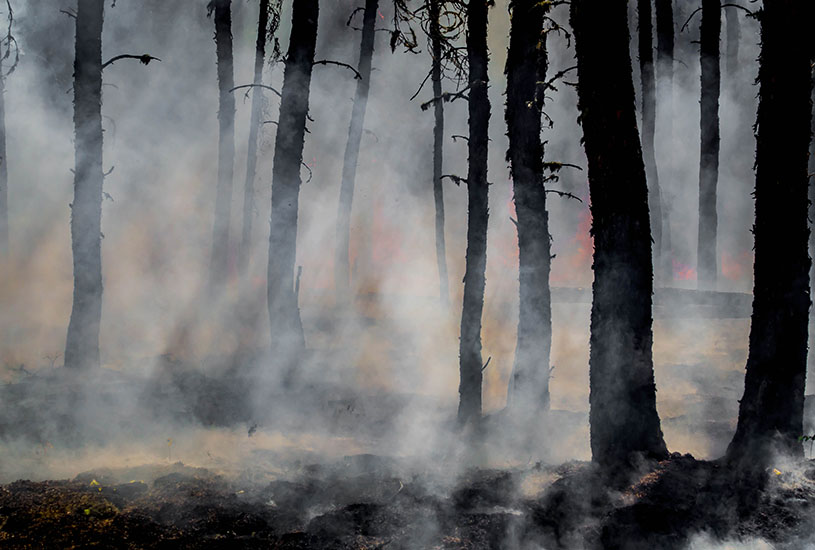New research from Deakin Business School has revealed the impact of natural disasters on Australia’s economy.
A Deakin University analysis of the consequences of natural disasters has found floods are more likely to impact the Australian economy than bushfires.
Professor Mehmet Ulubasoglu, from Deakin Business School, said while it was well known that natural disasters such as floods and bushfires had an immense impact on the economy and lives of people living in affected areas, any ongoing economic impact was less understood.
“In 2010-11 alone, the cost of damage and loss from the Queensland floods was $14.1 billion. It is estimated that by 2050 the economic cost of natural disasters will exceed $33 billion per year,” Professor Ulubasoglu said.
“Being one of the largest countries in the world by land mass – almost 80 per cent of the size of continental Europe, with large enough differences in weather but with comparable institutional frameworks across states—Australia offers a unique platform to estimate the state-wide effects of natural disasters.
“To the best of our knowledge, this is one of the first systematic studies to highlight the state-wide economic impacts of natural disasters in an advanced country context.”
Professor Ulubasoglu and Deakin Business School research fellow Dr Muhammad Habibur Rahman examined how natural disasters affect the prices of goods and services and different sections of the economy, including agriculture, mining and manufacturing and services sectors such as utilities, construction, transportation, safety and dwellings.
The pair analysed economic data from each Australian state and territory from 1978 to 2014, along with information on timing and location of 36 major fires and 47 major floods and found floods had an adverse and multi-year effect on agricultural output.
Their research, which is funded by the Bushfire and Natural Hazard Cooperative Research Centre (BNHCRC), found that a state that experienced a flood in a given year encountered, on average, 4.5 per cent lower agricultural production both that year and the next, compared to a state that did not experience a flood.
“This suggests that Australia lost two years’ worth of agricultural output during the period 1978 to 2014,” Professor Ulubasoglu said.
“Findings indicate that the effect is a general phenomenon rather than being driven by a particular flooding event.
“Mining output also declined following floods because it takes a huge amount of time to pump out the waters that inundated the mining zones.”
The researchers, whose work included both the 2009 Black Saturday Bushfires in Victoria and the 2010-11 floods in Queensland, found that bushfires had no impact on output of any economic sector, although they did impact prices.
[testimonial_text]We wondered whether bushfires adversely affected agriculture and found no significant impact. One explanation is that bushfires are mostly concentrated in the months of January and February during which the crop harvesting, for example, is almost over.[/testimonial_text]
[testimonial_picture name=”Professor Mehmet Ulubasoglu” details=”Deakin Business School”]
 [/testimonial_picture]
[/testimonial_picture]“We would have also expected some impact on the tourism sector, but it looks like policies to promote the affected areas have worked.
“There might, of course, be other intangible damages, such as on environmental and mental health, whose adverse economic impacts might appear in the long-term.”
Prices were found to respond to disasters fairly quickly in the aftermath of both floods and bushfires, Professor Ulubasoglu said.
“For instance, a surge in food, health and transportation costs occurred following the disasters with a decline in rent/house and recreation/culture prices.
“If state-wide food prices were to rise by an average of 0.59 per cent in the quarter of a disaster episode, this would raise the overall inflation of the same quarter by up to 0.1 per cent. However, the effects would be transitory, and taper off as the disaster effects unwind.”
The research also showed the high cost of insurance claims.
“The data indicate that the floods and bushfires in our sample resulted in a total insurance claim of $15,102,159,110 due to destroyed houses, buildings, and infrastructure,” Professor Ulubasoglu said.
“However, these figures are highly likely to underestimate the true damages and losses due to reporting bias and other intangible damages caused by natural disasters.”
The overall project aims to give a complete overview of the economic impact of floods, bushfires and cyclones in Australia with a focus on the wellbeing of individuals and firms, and to inform policy makers on the economics of natural disasters.
“The next stages of research will look at the Queensland Floods 2010-11, in particular their impact on individual incomes,” Professor Ulubasoglu said.
“We will also look at the impact of the Federal Government’s relief and recovery assistance and the effects of the Black Saturday bushfire and Cyclone Oswald on individuals’ economic wellbeing.”
Published by Deakin Research on 29 November 2017



